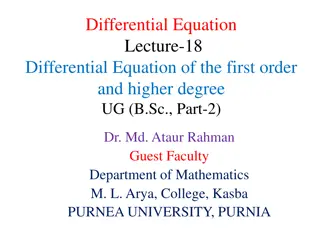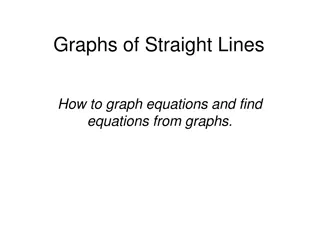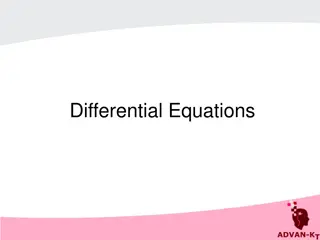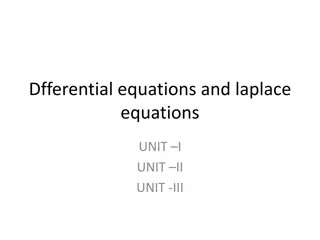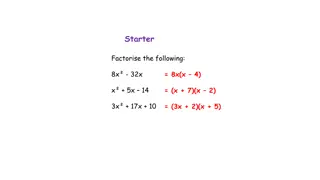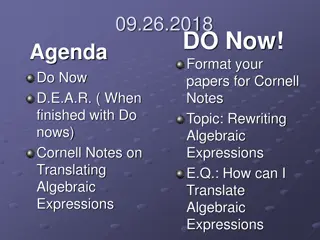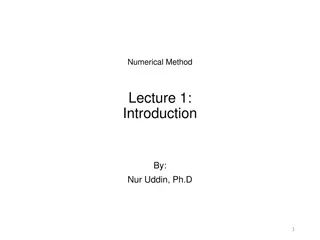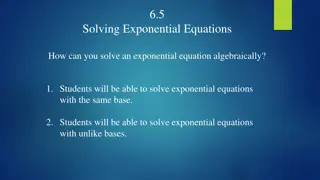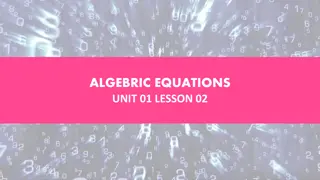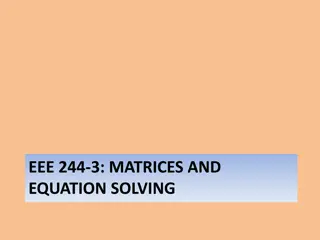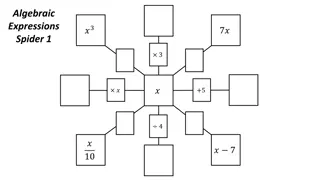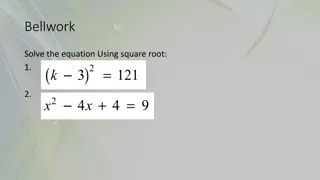Translating Written Information into Algebraic Symbols and Solving Equations
Learn how to translate written information into algebraic symbols and solve equations. Match mathematical sentences with translations, write let statements, and determine side lengths of a triangle. Enhance your algebraic skills through practical problems.
Download Presentation

Please find below an Image/Link to download the presentation.
The content on the website is provided AS IS for your information and personal use only. It may not be sold, licensed, or shared on other websites without obtaining consent from the author.If you encounter any issues during the download, it is possible that the publisher has removed the file from their server.
You are allowed to download the files provided on this website for personal or commercial use, subject to the condition that they are used lawfully. All files are the property of their respective owners.
The content on the website is provided AS IS for your information and personal use only. It may not be sold, licensed, or shared on other websites without obtaining consent from the author.
E N D
Presentation Transcript
Day1 Today you will learn to translate written information into algebraic symbols and then solve the equations that represent the relationships.
4-1. Match each mathematical sentence on the right with its translation on the left. 1. A zoo has two fewer elephants than zebras and Match each mathematical sentence on the right with its translation on the left. a. 2z + 12 = 30 five times more monkeys than elephants. The total number of elephants, monkeys, and zebras is 30. b. 12z + 5(z + 2) = 30 2. Zola earned $30 by working two hours and receiving a $12 bonus. c. z + (z 2) + 5(z 2) = 30 3. Thirty ounces of metal is created by mixing zinc with silver. The number of ounces of silver needed is twelve times the number of ounces of zinc. d. z + 12z = 30 4. Eddie, who earns $5 per hour, worked two hours longer than Zach, who earns $12 per hour. Together they earned $30.
4-2. Mathematical sentences, like those in the left column of problem 4-1, are easier to understand when everyone knows what the variables represent. A statement that describes what the variable represents is called a let statement. For example, for mathematical sentence (a), which is matched with translation 2, we could say, Let z = Zola's rate of pay (in dollars/hour). Note that a let statement always indicates the units of measurement.
Writing let statements: Write a let statement for each of the mathematical sentences in parts (b) through (d) above. 1. A zoo has two fewer elephants than zebras and five times more monkeys than elephants. The total number of elephants, monkeys, and zebras is 30. 2. Thirty ounces of metal is created by mixing zinc with silver. The number of ounces of silver needed is twelve times the number of ounces of zinc. 3. Eddie, who earns $5 per hour, worked two hours longer than Zach, who earns $12 per hour. Together they earned $30. b. 12z + 5(z + 2) = 30 c. z + (z 2) + 5(z 2) = 30 d. z + 12z = 30
4-3. The perimeter of a triangle is 31 cm. Sides #1 and #2 have equal length, while Side #3 is one centimeter shorter than twice the length of Side #1. Let s determine how long each side is: a.) Let x represent the length of Side #1. What essential part of this let statement is missing? What is the length of Side #2? Side #3? b.) Write a mathematical sentence that states that the perimeter is 31 cm. c.) Solve the equation you found in part (b) and determine the length of each side. Be sure to label your answers with the appropriate units.



